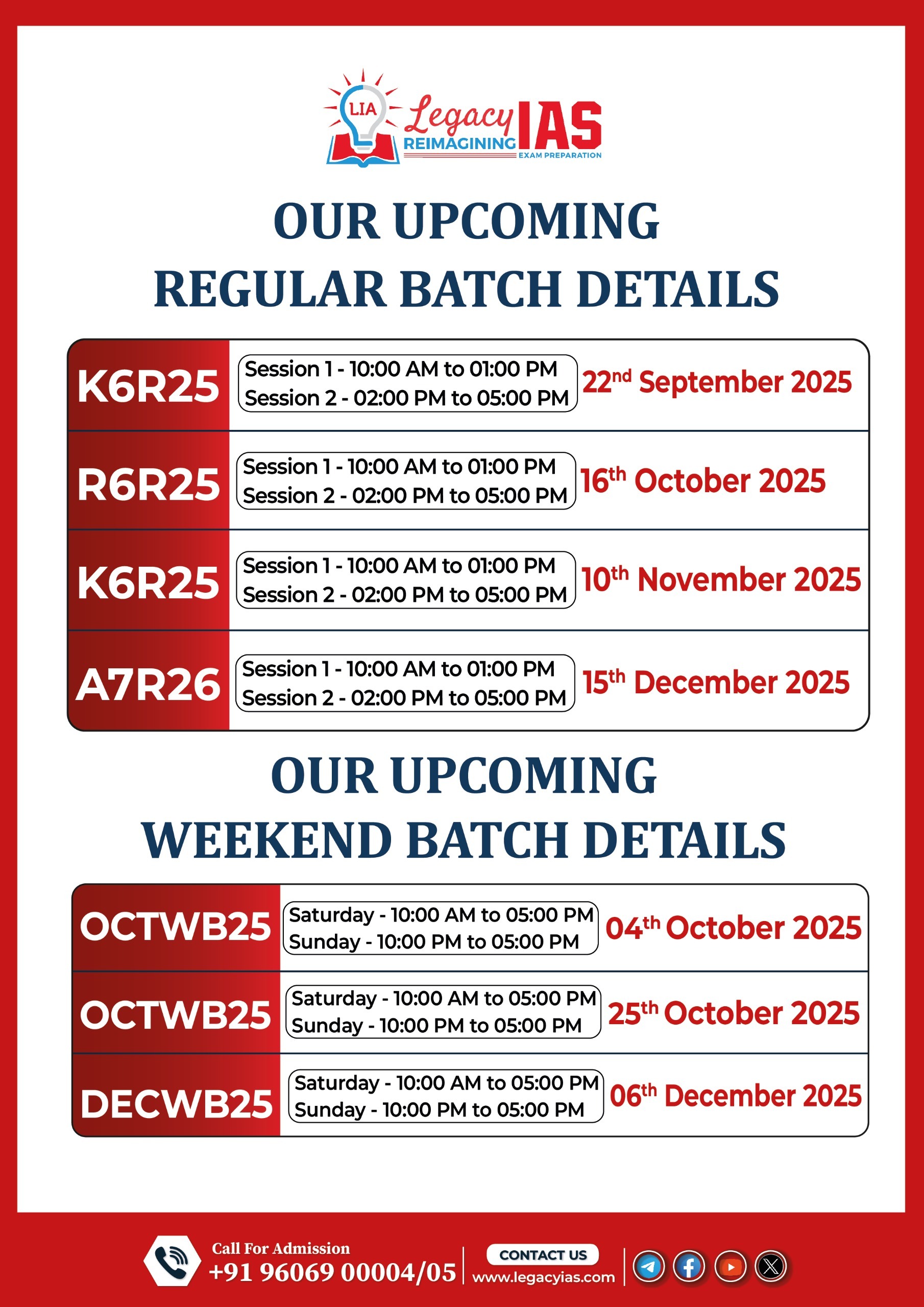Q1. Consider the following statements on Disinflation:
- Disinflation means falling inflation rate but still positive inflation.
- It leads to economic recession.
- RBI’s repo rate cuts in 2019 caused disinflation.
How many of the above statements are correct?
(a) Only one (b) Only two (c) All three (d) None
Answer: (a) Only one
Explanation:
- Correct – Disinflation = decline in the rate of inflation (e.g., 6% → 4% → 3%), but prices are still rising (positive inflation). Contrast with deflation (negative inflation).
- Incorrect – Disinflation can occur during soft landing (growth with controlled inflation) or due to supply improvement. It does not necessarily cause recession.
- Incorrect – Rate cuts are expansionary and typically increase inflation (reflation). In 2019, RBI cut repo rate from 6.5% to 5.15%, but inflation rose from ~3% to ~7% by 2020 due to food shocks, not disinflation.
Q2. Consider the following statements on Core Inflation:
- Core CPI excludes food and energy prices.
- It is used by RBI as the primary target.
- Core inflation is always lower than headline during supply shocks.
How many of the above statements are correct?
(a) Only one (b) Only two (c) All three (d) None
Answer: (a) Only one
Explanation:
- Correct – Core inflation strips out volatile food and fuel components to reveal underlying demand-driven trends. NSO publishes core CPI.
- Incorrect – RBI’s legal mandate (2016 amendment) is to target headline CPI (4% ± 2%). Core is used for analysis, not as target.
- Incorrect – During supply shocks (e.g., fuel price hike), headline > core. But during demand boom, core can exceed headline. Not “always lower.”
Q3. Consider the following statements on Phillips Curve in India:
- Short-run Phillips Curve shows trade-off between inflation and unemployment.
- Long-run Phillips Curve is vertical at NAIRU.
- India’s Phillips Curve flattened post-2016 due to inflation targeting.
How many of the above statements are correct?
(a) Only one (b) Only two (c) All three (d) None
Answer: (c) All three
Explanation:
- Correct – In the short run, lower unemployment → higher wage pressure → higher inflation (inverse relation).
- Correct – In the long run, expectations adjust; unemployment settles at NAIRU (Non-Accelerating Inflation Rate of Unemployment), making Phillips Curve vertical.
- Correct – Post Flexible Inflation Targeting (FIT) in 2016, inflation expectations anchored around 4%. Empirical studies (RBI Working Papers) show flatter short-run Phillips Curve due to credible monetary policy.
Q4. Consider the following statements on Deflation:
- Deflation increases real debt burden on borrowers.
- It encourages spending as prices fall.
- Japan in the 1990s is a classic example of harmful deflation.
How many of the above statements are correct?
(a) Only one (b) Only two (c) All three (d) None
Answer: (b) Only two
Explanation:
- Correct – Falling prices increase the real value of debt. A ₹100 loan becomes costlier in real terms if income/prices fall.
- Incorrect – Consumers postpone purchases expecting further price drops → demand collapse → deflationary spiral.
- Correct – Japan’s “Lost Decade” (1990s–2000s): deflation → delayed consumption → stagnation.
Q5. Consider the following statements on Inflation Measurement:
- CPI base year is 2012 for all series in India.
- WPI uses 2011–12 as base year currently.
- CPI weights are updated every 5 years using CES data.
How many of the above statements are correct?
(a) Only one (b) Only two (c) All three (d) None
Answer: (b) Only two
Explanation:
- Correct – CPI-Combined, CPI-Rural, CPI-Urban, CPI-IW all use 2012 = 100 as base year.
- Correct – Current WPI series: 2011–12 = 100 (released May 2017).
- Incorrect – CPI weights are based on Consumer Expenditure Survey (CES), conducted roughly decadally (not every 5 years). Last major CES: 2011–12. Next expected: 2023–24.



